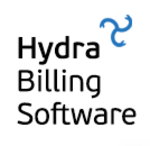Description

Hydra Billing

SpeedInvoice
Comprehensive Overview: Hydra Billing vs SpeedInvoice
Here’s a comprehensive analysis of Hydra Billing and SpeedInvoice, covering their primary functions, target markets, market share comparison, and key differentiating factors:
a) Primary Functions and Target Markets
Hydra Billing:
-
Primary Functions:
- Hydra Billing is a comprehensive billing platform that primarily serves the telecommunications and utilities sectors. It handles various billing processes, including subscription management, invoicing, payment processing, and revenue assurance. It also supports multiple pricing models and complex billing arrangements, which makes it suitable for handling large volumes of data and transactions.
-
Target Markets:
- Hydra Billing targets large and medium-sized enterprises in sectors such as telecommunications, utilities, and cloud services that require scalable and flexible billing solutions. Its primary users are companies needing robust billing systems that can manage complex invoicing and revenue management requirements.
SpeedInvoice:
-
Primary Functions:
- SpeedInvoice is an invoicing app designed to create and manage invoices efficiently. It offers features like customizable invoice templates, payment tracking, and reporting tools. It allows businesses to quickly generate professional invoices and track their finances easily.
-
Target Markets:
- The target market for SpeedInvoice includes freelancers, small businesses, and entrepreneurs who need straightforward and cost-effective invoicing solutions. Its ease of use and set of features tailored for smaller operations make it ideal for users without extensive financial management needs.
b) Market Share and User Base Comparison
-
Hydra Billing:
- Due to its focus on large enterprises with complex billing requirements, Hydra Billing operates in a niche market with fewer competitors. Its user base is smaller compared to more generalized invoicing solutions but consists of high-value clients with potentially large-scale needs.
-
SpeedInvoice:
- SpeedInvoice caters to a broader audience since it targets small to medium-sized businesses and freelancers. This gives it a larger user base in terms of volume, but its market share may be diluted due to the high competition in the simple invoicing and small business accounting software market.
c) Key Differentiating Factors
Hydra Billing:
- Complex Billing Management: Capable of handling complex billing scenarios tailored for industries like telecom and utilities.
- Scalability: Designed to support the needs of large-scale enterprises with high transaction volumes.
- Customization: Offers extensive customization to meet specific industry standards and regulatory requirements.
SpeedInvoice:
- Simplicity and Ease of Use: Provides a user-friendly interface for quick invoicing without the need for technical expertise.
- Affordability: Positioned as a cost-effective solution for small businesses and freelancers.
- Mobile Accessibility: Offers strong mobile support, allowing users to manage invoices on-the-go via mobile devices.
Conclusion
Hydra Billing and SpeedInvoice cater to distinctly different markets with unique needs. Hydra Billing is suited for larger enterprises needing highly scalable and customizable billing solutions while SpeedInvoice offers an accessible, simple, and cost-effective invoicing tool for small businesses and freelancers. The choice between them would depend significantly on the complexity of the billing needs and the size of the organization.
Contact Info

Year founded :
Not Available
Not Available
Not Available
Bulgaria
http://www.linkedin.com/company/hydra-billing-solutions

Year founded :
2014
+61 414 559 790
Not Available
Sweden
http://www.linkedin.com/company/speedinvoice
Feature Similarity Breakdown: Hydra Billing, SpeedInvoice
When comparing invoicing and billing software like Hydra Billing and SpeedInvoice, there are several aspects to review, including core features, user interfaces, and unique offerings. Here's a breakdown based on typical capabilities of such software:
a) Core Features in Common
Both Hydra Billing and SpeedInvoice likely offer several core features found in most invoicing and billing software:
-
Invoice Creation and Management: Both platforms should allow users to create, send, and manage invoices, including recurring invoices.
-
Payment Processing: Integration with payment gateways to accept credit card payments and other digital payment methods is typically supported.
-
Client Management: Both likely provide tools to manage customer information and track client interactions.
-
Reporting and Analytics: Generating reports on transactions, outstanding invoices, and other financial metrics is a common feature.
-
Customization Options: Options to customize invoices with company branding, such as logos and colors, are usually available.
-
Multi-Currency Support: Handling transactions in multiple currencies to support international billing is often a standard feature.
b) User Interface Comparison
When comparing user interfaces, consider the following common aspects:
-
Ease of Use: Both may offer intuitive, user-friendly interfaces designed to streamline invoice creation and management tasks.
-
Design and Aesthetics: SpeedInvoice might lean towards a more minimalist and mobile-friendly UI, reflecting its focus on fast, on-the-go invoicing. In contrast, Hydra Billing may provide a more robust dashboard suited for complex billing scenarios.
-
Dashboard Functionality: Both platforms likely feature dashboards displaying critical billing information clearly, though the complexity and customization options could vary.
-
Mobile Access: Both platforms should provide mobile access, but the quality of the mobile UI (whether through apps or responsive design) may differ.
c) Unique Features
Each software might have unique features tailored to different user needs:
-
Hydra Billing Unique Features:
- Telecom Billing Support: Hydra Billing might excel in supporting telecom and utility billing with features like call data record (CDR) management and real-time billing.
- Complex Pricing Models: It might offer advanced features for managing complex pricing models, such as tiered pricing.
-
SpeedInvoice Unique Features:
- Offline Functionality: SpeedInvoice may offer features that allow users to create and send invoices without an internet connection, which is beneficial for on-the-go professionals.
- Emphasis on Fast Invoicing: Designed for rapid invoice creation, SpeedInvoice might focus more on speed and simplicity, catering to small businesses and freelancers.
These distinctions can significantly influence the choice of software depending on specific business requirements, such as the need for advanced telecom billing features or streamlined invoicing on mobile devices.
Features

User-Friendly Dashboard
Flexible Payment Options
Customer Management
Automated Billing Cycles
Comprehensive Reporting

Financial Insights
Client Management
Expense Management
Invoicing Made Simple
Best Fit Use Cases: Hydra Billing, SpeedInvoice
Hydra Billing
a) Best Fit Use Cases for Hydra Billing:
Hydra Billing is particularly suited for businesses and projects that require complex billing systems and advanced subscription management. It is an ideal solution for:
-
Telecommunications Companies: Hydra Billing is designed to handle intricate billing structures commonly required in the telecommunications industry, such as postpaid and prepaid billing, multi-tiered pricing, and real-time charging.
-
Utilities Providers: Companies in water, gas, and electricity sectors benefit from Hydra Billing's capability to manage metering data, consumption-based invoicing, and regulatory compliance.
-
Internet Service Providers (ISPs): It caters to ISPs that need to manage various service packages, data consumption monitoring, and dynamic pricing models efficiently.
-
Cloud Service Providers: Those needing to bill clients based on resource usage (such as storage and computing time) can benefit from the software’s advanced billing infrastructure.
-
Subscription-Based Businesses: Companies offering SaaS, streaming services, or other subscription-based models that require recurring billing, and sophisticated revenue recognition can leverage Hydra Billing effectively.
SpeedInvoice
b) Preferred Use Cases for SpeedInvoice:
SpeedInvoice is more suited for small to medium-sized businesses that need straightforward, efficient invoicing solutions. Ideal scenarios include:
-
Freelancers and Consultants: Professionals who need quick, reliable invoicing without the complications of extensive billing features. SpeedInvoice offers simplicity and speed, perfect for freelancers managing multiple clients.
-
Small Retail Businesses: Businesses requiring simple inventory management in combination with efficient invoicing processes benefit greatly from SpeedInvoice's user-friendly interface.
-
Construction and Trade Services: For those in industries like construction, plumbing, or electrical services, where quoting, invoicing, and tracking project expenses are crucial, SpeedInvoice provides a straightforward and effective solution.
-
Service-Based Businesses: Companies that need to generate invoices promptly after services are rendered, such as cleaning services, landscaping, and other home services, find SpeedInvoice effective.
Catering to Industry Verticals and Company Sizes
-
Hydra Billing is tailored for larger companies and enterprises that deal with complex billing needs across various domains, including telecom, utilities, and cloud computing. Its scalability and the ability to handle complicated billing cycles make it suitable for businesses with diverse product offerings and extensive customer bases.
-
SpeedInvoice, on the other hand, caters more towards small to medium-sized businesses, freelancers, and service-based industries. It prioritizes efficiency, ease of use, and speed, making it perfect for businesses that need to manage straightforward invoicing with minimal complexity.
In summary, Hydra Billing is best for larger enterprises with complex billing needs in specific industries, while SpeedInvoice is favored by smaller businesses and solo entrepreneurs needing efficient and straightforward invoicing solutions.
Pricing

Pricing Not Available

Pricing Not Available
Metrics History
Metrics History
Comparing teamSize across companies
Conclusion & Final Verdict: Hydra Billing vs SpeedInvoice
To provide a comprehensive conclusion and final verdict for Hydra Billing and SpeedInvoice, we need to consider several aspects including features, pricing, user interface, customer support, and scalability.
a) Best Overall Value
Hydra Billing might offer the best overall value for businesses requiring a comprehensive billing solution with robust features tailored for telecom and subscription-based services. Its strengths lie in its customization options, scalability, and ability to handle complex billing scenarios.
SpeedInvoice, on the other hand, may present the best value for small to medium-sized businesses looking for a straightforward, easy-to-use invoicing solution with effective mobile capabilities. It is generally more economical for businesses that do not require complex billing processes.
b) Pros and Cons
Hydra Billing:
-
Pros:
- Comprehensive Feature Set: Offers extensive features suitable for telecom services, including subscription management, real-time charging, and revenue assurance.
- Customization and Scalability: Highly customizable to cater to specific business needs and scalable as the business grows.
- Robust Reporting: Provides detailed analytics and reporting functionalities for informed decision-making.
-
Cons:
- Complexity: May have a steep learning curve due to its extensive functionality, which can be overwhelming for smaller businesses without technical expertise.
- Cost: Can be more expensive, making it a less viable option for small businesses with basic billing needs.
SpeedInvoice:
-
Pros:
- User-Friendly: Designed for ease of use with an intuitive interface, making it accessible for users with minimal technical skills.
- Affordability: Lower cost, more budget-friendly option ideal for small business owners and freelancers.
- Mobile Accessibility: Strong mobile app support, allowing users to handle invoicing on-the-go.
-
Cons:
- Limited Features: May lack comprehensive billing features needed for larger businesses or those with complex billing operations.
- Scalability Constraints: Might not be suitable for rapid scaling, as the feature set caters primarily to smaller operations.
c) Recommendations for Users
For users deciding between Hydra Billing and SpeedInvoice:
-
Evaluate Business Needs: Consider the complexity of your billing operations. If you run a telecom company or a business with complex subscription billing needs, Hydra Billing is likely more suitable. However, if you operate a small to medium-sized business with straightforward invoicing requirements, SpeedInvoice might serve you better.
-
Budget Considerations: Assess your budget for billing/invoicing software. While Hydra Billing offers advanced features, it might come at a higher price point. SpeedInvoice, being more economical, could be more aligned with tighter budgets.
-
Growth and Scalability: Factor in your business growth plans. If you anticipate significant growth and need a scalable solution, Hydra Billing could better accommodate this. Conversely, if you prefer a simpler solution due to stable operational demands, SpeedInvoice might be fitting.
In making a final decision, it is crucial to align the software's capabilities with your business goals and operational needs. Consider starting with a trial or demo (if available) to better understand how each tool fits within your business context.
Add to compare
Add similar companies




